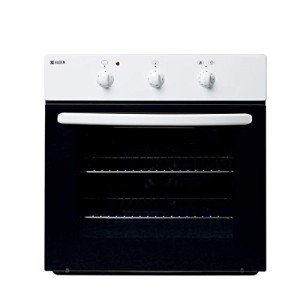10 Oven And Hob That Are Unexpected
작성자 정보
- Byron Fontenot 작성
- 작성일
본문
 How to Choose the Right Oven and Hob for Your Kitchen
How to Choose the Right Oven and Hob for Your KitchenWe have a wide range of sizes, styles and features that will fit in with any kitchen.
Solid plate hobs can be simple to use and are durable. They are made of metal with a sealed surface that heats your cookware. They are suitable for flat-based products and may be cost-effective to operate.
Origins
Ovens are kitchen appliances that are used to roast and bake food for households across the world. They typically are powered by electricity or gas, with bottle gas models that are available in certain markets however ovens can also make use of other fuels, such as wood or charcoal. In many homes, an oven is surrounded by a stove where food can be cooked. hobs uk are essentially a stove that can be turned on and off. An oven is a sealed enclosure which heats food in the middle.
The first ovens were massive brick and mud structures, which contained fire in order to heat food. They were used to bake bread, cook meat, and other meals since they were relatively good at keeping the heat at an even temperature, and were able to be shared amongst family members. However, open pits and furnaces came with three major disadvantages - they were dangerous due to the open flame and smoke and they used a lot of fuel (wood) and was difficult to regulate the heat and cooking process.
A solution was found using ovens that resembled fireplaces, with a chimney that closed off the fire to lessen its intensity and smoke and make it easier to control. They were popular in the 16th and 17th centuries, and were often found in households that were wealthy enough to have a separate kitchen area with a chimney, and having more than one fireplace and oven.
By the mid-19th century, European ovens had evolved to become a common feature in kitchens at home. It was partly due the fact that the oven was essential. It was more secure and efficient to cook over an open fire or in the cauldron. It is also believed that the development and use of ovens coincided in part with the evolution of cooking techniques and recipes, which led to a greater focus on meat and casseroles.
It is important to note that in certain recipes, such as those from Nigella she suggests leaving the pot "on the hob" but this can be misleading because hob is actually a British word that refers to stove top. The North American equivalent is a range or cooktop, so it could be confusing if you are not familiar with the British terminology.
Functions
Oven functions, also known as cooking modes, are pre-programmed choices which control the way that oven's heating elements and fan work based on the recipe. They are designed to make cooking food simpler and more efficient, while preserving the flavor and texture.
Ovens typically have a conventional mode that heats from the top and bottom to bake or roast food. They also come with a fan-assisted option which utilizes a built-in fan in order to circulate air throughout the oven for more even heating and faster speed. There are many options for oven and hob functions. It is important to understand the differences to determine the best one for you.
A fan-assisted oven feature is perfect for cooking a variety foods. It warms up the oven more evenly than standard ovens, and is perfect for grilling, baking, and roasting. It's particularly helpful for dishes that require quick, crisp and fast-drying like pizza or pie. The Fan-Assisted setting is identified with a zigzag at the top and a straight line at the bottom of a square and can help you save up to 40% in cooking time.
Some ovens have a grilling function that combines the heat from the bottom of the oven with the top to give your meals a delicious charcoal. This is a great option for kebabs of meat and vegetables and can be marked by straight lines or zigzag lines, similar to Fan-Assisted. This is typically used on the lower rack of the oven, so make certain to be aware of your oven's temperature settings to avoid overcooking.
Other oven functions include slow cooking baking, proofing bread and pastries and much other things. These are often pre-programmed to create a warm and controlled environment that will facilitate the rising of dough and allow your food develop amazing flavours.
There are also some ovens that come with a Steam function which is ideal for creating healthy, nutritious foods. Steam adds a delicate and rich flavour to baked products such as poultry, vegetables, and custards. This function can be activated by placing water in the oven's reservoir and then turning it on. Some models will even adjust the amount of steam depending on the temperature selected.
Types
There are many kinds of ovens and hobs on the market with a range of styles, from traditional gas to modern electric models. It is important to choose an oven and a hob that meets your requirements. It is important to consider features like self-cleaning or smart capabilities too.
Gas ovens are a great fit in many kitchens and are a popular option. They typically come with burners that have rings and a grate on which pans rest on. They emit heat, which makes them easy to use. Gas hobs are also energy-efficient and have precise temperature control. This could help you reduce your utility bill. However, they will take longer to preheat than electric ones and are difficult to clean if they are left with residues.
Electric hobs oven come in a variety of styles including induction and ceramic. Induction hobs are a little more expensive to purchase, but they are considered energy efficient as the hob only generates heat when you place a pan on it. They are also safe for children and heat up fairly quickly. However, they do not always heat uniformly and can take a long time to cool down.
Plate hobs are a classic of the kitchen, offering an array of cooking zones, all on a flat surface that sits under your kitchen units. They are sleek and have a modern design that is perfect for all kitchens. They are difficult to clean since they have a variety of zones with uneven heating. If not cleaned properly they could leave burn marks.
Single ovens with built-in ovens are the most common kind of oven, and these can be fitted either under a stove or at eye level in a built-in unit. They are typically large enough to hold a large dinner and are available in different sizes, so make certain to consider your family's size when selecting an oven. They can also be found with additional options like the grill or steam function.
Installation
If you're installing a new oven or replacing one you have, it might be worthwhile to hire an electrician to manage the installation for you. This will ensure that the electrical circuit is properly set up and that the new oven is safe to use. A licensed electrician will be able to adhere to local regulations and ensure that the installation is in accordance with all applicable safety regulations.
You'll require all the tools and equipment that you require before beginning the installation of your brand new electric hob and oven - mosdrev.com,. These include wire nuts an electric tape, screwdriver, an electrical circuit tester and conduit. It's also important to check the electrical supply at your home to ensure it is able to handle the load of a new electric oven and hob.
The first step in the process of installing a new hob and oven is to get rid of any old appliances. To do this, locate the bolts or screws that hold the old appliance and remove them with care. After the appliance is removed, the space where the new one will be installed should be clear of any obstructions. The junction box must be installed, with the conduit connected to the electrical supply. This should be done according to the manufacturer's instructions as well as any relevant local regulations.
Once the electrical connections are made, the oven or hob can then be lowered in the desired position. The fitter will utilize the clips that came with the hob to secure it and ensure it is flush with your work surface. Finally, the fitter will test the hob to ensure that it's functioning properly.
If you're installing a gas hob and oven, it's a good idea employ a professional for the job. Gas installation is not as simple as plugging in an electric oven. A CORGI registered engineer is required to connect the pipework. Installing an oven hood is a good option if you do not already have one. This will allow air to circulate in your kitchen, and is required by Part F of Building Regulations.

관련자료
-
이전
-
다음
댓글 0
등록된 댓글이 없습니다.
